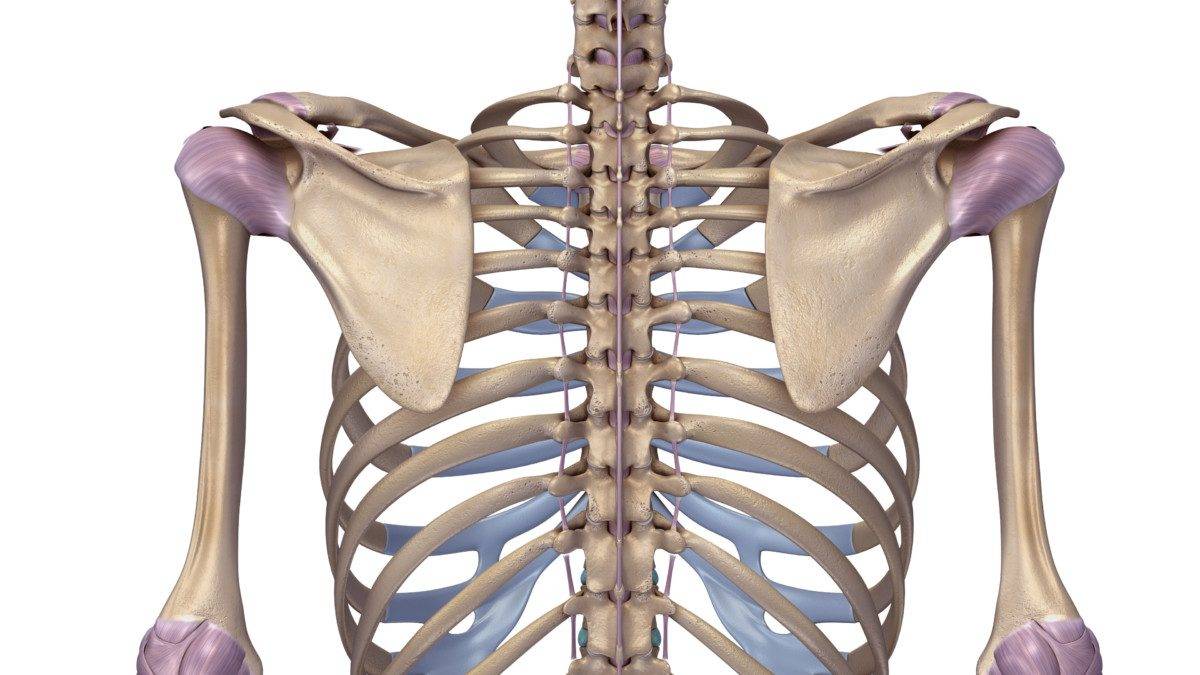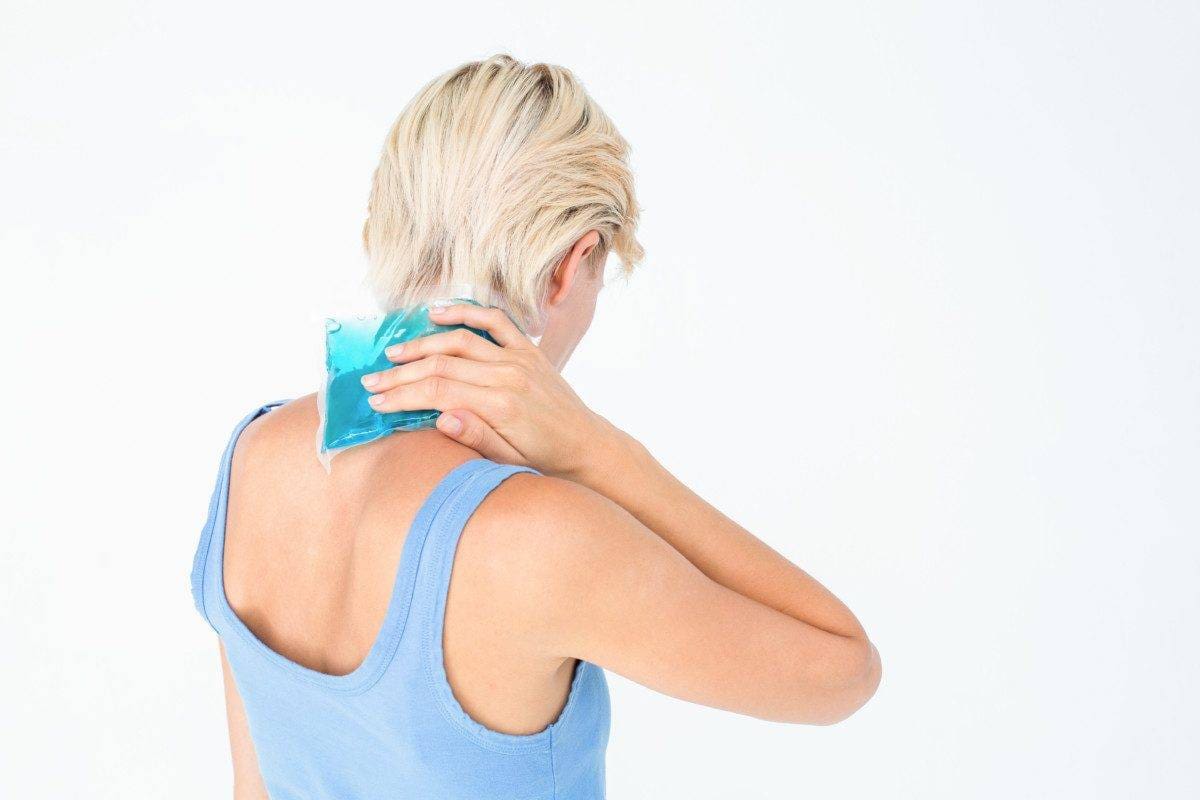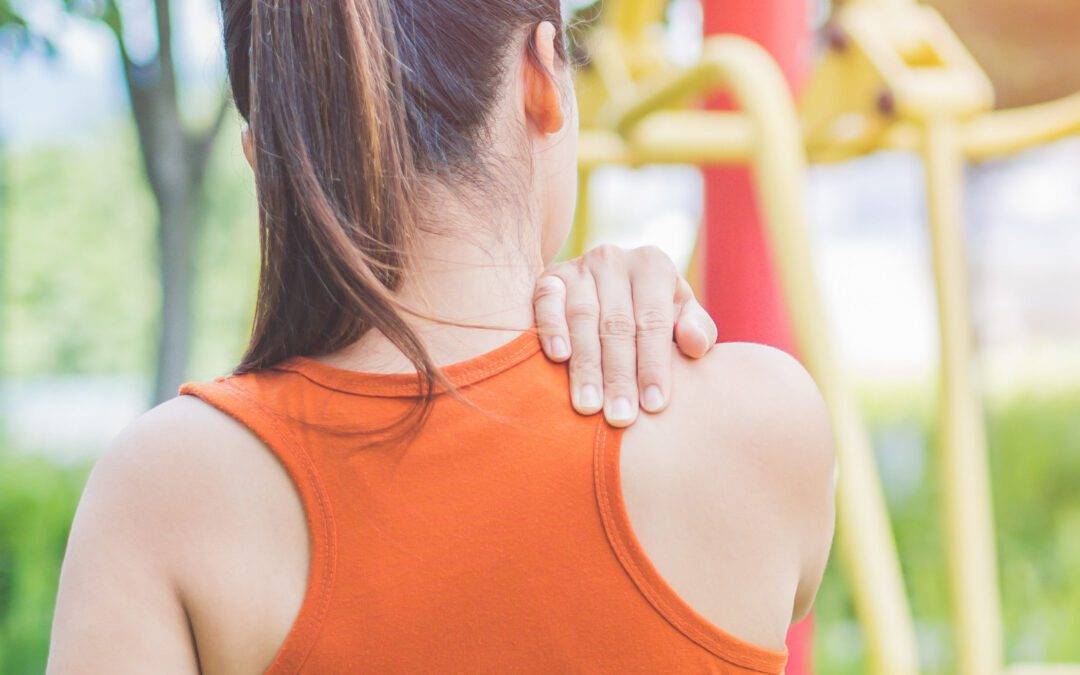By Dr. Richard Thompson, DC
5 Minute Read
Upper or middle back pain is one of the most common issues we see in clinical practice. The pain often comes on gradually after a period of prolonged tension, that begins as a dull, tightness or achiness, but as it worsens, the pain becomes noticeably more sharp. In some cases, the pain gets so intense that the upper back goes into spasm, causing pain and tension up into the neck. Occasionally, pain will radiate across the shoulder and down the arm to the elbow. In these instances, patients will often worry that they’re experiencing a heart attack when it’s down the left arm. Fortunately, after being thoroughly tested at the emergency room, no cardiac event is identified. When patients present with this problem, they almost always describe the problem as a ‘knot’ in their upper/mid back, between the edge of their shoulder blade and their spine. In the vast majority of cases however, this knot is actually not a knot. It’s an irritation of one or more joints where the ribs attach to the spine, known as the costotransverse and costovertebral joints.

Let’s first understand the anatomy of these structures, as most patients are surprised to hear that they have ‘ribs’ in their back. The thoracic wall, formed by 12 ribs on the left and 12 ribs on the right, each have two articulations (joints) that connect to each of the 12 thoracic vertebrae. This is the only true connection of the ribs to the axial (spinal) skeleton, as the ribs wrap around to the front of the chest wall attach to the sternum (chest bone) via a cartilaginous form of joint, called the costal cartilage. These types of rigid connections have very little give or movement, so essentially almost all of the joint mobility for the rib attachments are found at the two connections of the rib at the spine. Any joint of this type has the risk of irritation or sprain, depending on the stressors or dysfunctional movement patterns that are imposed upon it. Most commonly, postural changes occur gradually in the neck and upper back, particularly from prolonged computer use, cell phone use, or improper sleeping positions or support. As tissue dysfunction builds slowly over time, the joints also start to lose mobility, and eventually get irritated and inflamed. Because these joints are located just below a couple of layers of muscle and fascia (connective tissue) in the upper/middle back, the enlarged, irritated joint(s) can be mistaken for knots in the muscles. Even though the muscles are also involved in the problem, ultimately addressing the rib joint irritation is the key to having the problem resolved effectively.

So, how do we prevent these injuries from occurring? As I have already mentioned, these rib joint irritations often first start off with a gradual build up in dysfunction (or lack of proper movement) in the tissues of the neck and upper back caused by postural alterations or stress. One of the most important things we all do is to assess how we are working, playing and sleeping every day. With the increased working from home these past 18 months and the use of improper workstations, rib joint irritations are one of the most common injuries resulting from the postural strain that is occuring. So what do postural strain and alterations look like? It’s a gradual shifting of the head forward, from the neutral position of the ears sitting above the tips of the shoulders when looking at the body from the side. You also see a rounding of the upper back and a forward shift of the shoulder blades overtop of the rib cage. As a result of the thoracic rounding, the neck starts to hyperextend, or ‘hinge’ at one or two segments so that the head remains level when looking straight ahead. All of this creates aberrant movement through the rib cage, and due to the long, thin anatomy of the ribs inducing a lot of leverage on the rib joints, they lose their mobility and eventually become irritated. So, the best prevention strategy is to first correct your working positions and overall posture.

Unfortunately, because life often gets very busy and we are under a lot of stress, preventative measures can’t always be taken or just aren’t enough. So, what do you do if this injury occurs? Priority should be put on the pain and inflammation of the rib joints and surrounding tissues. Application of ice in intervals of 10 minutes on and off is your best option. Protect the skin by wrapping a pliable gel pack with paper towel and apply directly to the skin over the area, ideally while laying flat or reclined so that the neck and back are relaxed. It’s critical that we address the pain and inflammation first, so in very acute occurrences, an over-the-counter anti-inflammatory medication or topical cream could be helpful. Too often I see patients who have first used stretching, foam rolling, or manual massage as their first line of defence, only to see a worsening in the pain/symptoms. That’s because an irritated joint often doesn’t like manual pressure over it until the inflammation has been reduced. The first 2-3 days should be focused on ice (avoid heat, even though it soothes the area temporarily), then a gradual introduction of heat and stretching will start to help loosen up the area and have you moving more comfortably. From there, the last piece of the puzzle is to strengthen the muscles of the upper back and neck to help correct the postural alterations and eliminate the stress on the rib joints. This involves a series of exercises focused on the muscles between the shoulder blades and upper back, as well as the muscles deep in the neck behind the throat. At the same time, continuing to work on stretching the muscles of the chest and the back of the neck.

When the initial icing and anti-inflammatory measures aren’t helping to reduce symptoms, its best to see a qualified healthcare professional. They would assess and treat the injury to expedite healing and provide you with the appropriate home care recommendations to avoid aggravating the problem. At Active Approach, pain and anti-inflammatory modalities would be first used to help settle down the irritation and spasm. Then manual soft-tissue and joint manipulation therapies would then be used to help reduce tissue dysfunction and improve modality. Finally, rehabilitation protocols will be implemented to strengthen the area and reduce the likelihood of reaggravation of the problem in the future. As always, we are only a phone call or email away to help you with your healthcare needs and Get Back to Your Active Life!

